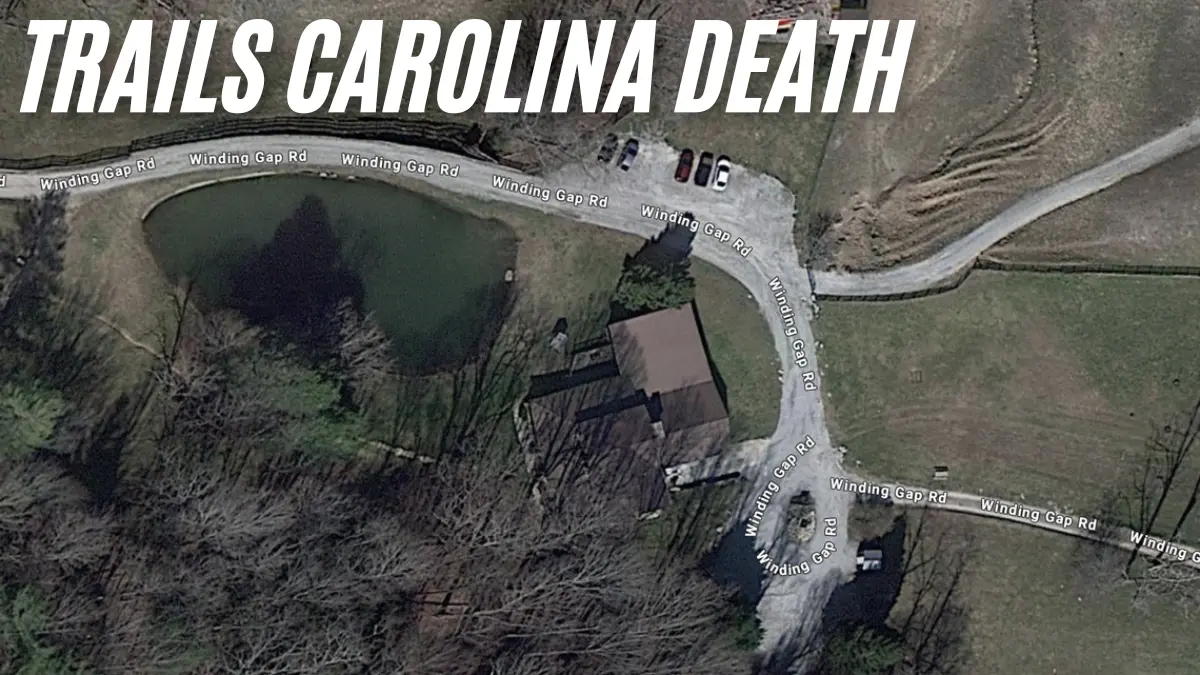The phrase “Trails Carolina Death” has recently become a significant topic of discussion, particularly in the context of adolescent behavioral health programs. While it is crucial to address the importance of these programs, we must also acknowledge and understand the unfortunate tragedies that sometimes occur within them. In the case of Trails Carolina Death, a wilderness therapy program for troubled youth, an incident involving the death of a participant sparked widespread concern and scrutiny. This article seeks to explore the events leading to the tragic incident, the implications for similar programs, and the ongoing conversations surrounding safety in behavioral treatment.
The Background of Trails Carolina

Trails Carolina Death is one of many wilderness therapy programs aimed at helping troubled teens and young adults navigate behavioral, emotional, and mental health challenges. These programs typically offer a therapeutic setting where participants engage in outdoor activities such as hiking, camping, and survival skills training. The goal is to foster personal growth, emotional regulation, and the development of healthy coping mechanisms. Trails Carolina Death, based in North Carolina, has been one of the more prominent programs of its kind in the United States.
These wilderness programs often cater to young people struggling with issues such as addiction, depression, anxiety, and behavioral disorders. The idea behind such programs is to remove the individual from their usual environment, placing them in a controlled, nature-filled setting that encourages self-reflection and positive change. The programs usually include a combination of group therapy, one-on-one counseling, and practical outdoor activities to help the participants develop valuable life skills.
While many participants have benefitted from such programs, the tragic event that occurred at Trails Carolina Death highlights the potential dangers involved in wilderness therapy and the need for improved safety protocols and accountability.
The Incident and Its Tragic Outcome
In 2016, a tragic incident unfolded at Trails Carolina Death that would forever alter the course of the program and leave a lasting mark on the families involved. A young participant, who had been struggling with various behavioral and emotional challenges, was reported to have died during their time in the program. The specifics of the incident were met with confusion, and the details were initially vague, prompting an outcry from concerned parents, advocates, and the public. The details of what happened that day and how the program responded to the crisis would soon become central to the ongoing conversation about wilderness therapy programs and their safety standards.
According to reports, the young participant, whose identity was not publicly disclosed at first, had been involved in a strenuous outdoor activity when something went terribly wrong. It was later revealed that the cause of death was linked to complications from dehydration and other health-related factors exacerbated by the physical demands of the wilderness setting. The incident sparked immediate questions about the program’s safety protocols, the qualifications of the staff members, and whether the program had been adequately monitoring the health of its participants.
This event prompted a national outcry and calls for greater transparency, regulation, and oversight of wilderness therapy programs. The death of a young individual under the care of a program designed to help troubled teens brought into question the true effectiveness and safety of such interventions.
The Aftermath of the Tragedy
Following the death of the participant, Trails Carolina Death faced intense scrutiny from both the media and regulatory bodies. The incident was covered extensively in the press, with many questioning whether the wilderness therapy model was inherently flawed or whether this was an isolated incident resulting from negligence. The families of the deceased participant, along with other advocates, demanded accountability and changes in how such programs operate.
In the aftermath of the tragedy, the program was forced to confront its practices, review its safety protocols, and implement new procedures to ensure the well-being of its participants. The death served as a stark reminder of the need for better training, oversight, and more stringent regulations for wilderness therapy programs. These programs often operate in remote locations, far from immediate medical assistance, and involve physically demanding activities that can be harmful if not properly managed.
In response to the incident, Trails Carolina Death issued a public statement expressing deep sympathy for the family’s loss while also defending the overall safety of their program. They claimed that they had followed all industry-standard safety guidelines and that the incident was an isolated occurrence. However, the death still raised serious questions about how prepared the program and its staff were to deal with such crises.
The incident also led to renewed discussions in the public sphere about the efficacy and safety of wilderness therapy programs. Critics of the model argued that these programs, while offering potential therapeutic benefits, are often poorly regulated and lack proper safeguards for participants. This controversy led to calls for increased oversight from government agencies, including the need for stricter health and safety regulations.
Reforms and Legal Action
In the years following the death at Trails Carolina Death, legal actions and reforms aimed at improving safety in wilderness therapy programs became more prominent. The incident contributed to growing public pressure for government intervention, as many believed that the lack of regulation posed significant risks to vulnerable young people. Lawsuits were filed by the family of the deceased participant against Trails Carolina Death, accusing the program of negligence and wrongful death.
The legal battles that ensued highlighted the lack of uniform standards across the wilderness therapy industry. While some states had adopted more stringent regulations for programs that operate with vulnerable populations, others had minimal oversight, leaving the door open for dangerous practices to continue unchecked. The legal actions and subsequent settlements also underscored the need for reform to prevent future tragedies.
In the wake of the tragedy, various states introduced new legislation aimed at increasing transparency and accountability for wilderness therapy programs. This included mandatory health screenings for participants, increased staff-to-participant ratios, and more robust protocols for monitoring the physical and mental health of individuals in the program. Some states also began implementing licensing requirements and independent audits to ensure that programs were adhering to safety standards.
While these reforms were seen as a step in the right direction, many advocates argued that more needs to be done to protect young people in wilderness therapy programs. They emphasized that these programs should not only focus on behavioral health but also prioritize the physical safety and well-being of participants.
The Broader Debate on Wilderness Therapy
The death at Trails Carolina Death sparked a broader debate about the role of wilderness therapy in the treatment of troubled youth. While many believe that these programs offer a valuable alternative to traditional therapeutic settings, others argue that they come with inherent risks that cannot be ignored. The wilderness setting is often remote, leaving participants far from emergency medical care, which can exacerbate health issues.
Proponents of wilderness therapy point out that these programs provide a unique environment that can foster personal growth, teach survival skills, and provide a sense of achievement. They also emphasize the importance of a holistic approach to treatment, focusing not just on the individual’s behavioral issues but on their overall development and well-being.
However, critics argue that the potential risks of such programs are too great, especially when it comes to the physical demands placed on participants. The tragic death at Trails Carolina Death serves as a poignant reminder that more must be done to ensure that wilderness therapy programs are truly safe and effective for those who choose to participate.
Conclusion
The tragic death at Trails Carolina Death serves as a sobering reminder of the potential dangers involved in wilderness therapy programs. While these programs aim to help troubled youth, the incident highlights the critical need for better safety protocols, regulation, and oversight. It is clear that any intervention designed to assist vulnerable individuals must prioritize their physical and mental health at all stages of treatment.
Trails Carolina Death In the years following the tragedy, discussions surrounding wilderness therapy have continued to evolve, with an increasing focus on ensuring the safety and well-being of participants. As the industry adapts to these lessons, it is hoped that future programs will better balance the therapeutic benefits of wilderness settings with the need for adequate safety measures. The conversation sparked by this tragic incident continues to shape the landscape of adolescent mental health treatment, urging a more responsible approach to helping young people navigate their challenges.










